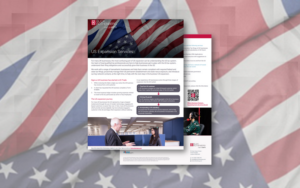The lost art of the job description
Stuart Hyland says some recently updated job descriptions were shared with me along with the comment: good luck making any sense of those!
I was recently talking to an HR Director of a large international business, and we were working on a plan to help the business prepare for the new EU Pay Transparency Regulations when our conversation touched on their use of job descriptions.
Some recently updated job descriptions were shared with me along with the comment: “good luck making any sense of those!”. On review, I found them to be vague and repetitive with different roles (and levels of job) sharing a lot of content. Certainly not enough distinct content to differentiate between levels of work with any confidence. They also included a lot of jargon and acronyms which made them difficult to read and impossible to understand. The net result was an overly long document which actually failed to deliver an understanding of what the job was actually supposed to be delivering.
I began working with job descriptions on a regular basis over 25 years ago when I first started as a reward consultant, and I have seen a long and gradual decline in the quality of these documents over this period. They were far from perfect 25 years ago, but they were generally more specific and made much less use of the copy and paste function. There were still some issues of course e.g. the Finance Director who proudly gave me his job description and handed me a ring-binder containing nearly 100 pages of A4, or the high-profile global business who in 1998, handed me a set of ‘current’ job descriptions which were dated from the 1960’s. Despite these exceptions, the overall quality was much higher and a world apart from what I am seeing today.
Agile business and fixed job descriptions are not compatible
There will be those, of course, who will argue that the fall in standards is not an issue. The world has moved on, and we need people and roles to be agile and ready to change direction rapidly when the business context shifts. I believe those people are partly correct. The world of work is evolving and changing quicker than at any point in recent history and employers need their people to keep up with (and ahead of) those evolutions. In this environment, the concept of a fixed job description which sets out everything that is needed from a role and which is only reviewed annually at best, is clearly not going to work and neither is it realistic or right to expect job descriptions to be updated on a weekly or even monthly basis.
The need for clarity
At the same time, there is an increasing understanding of the importance of role clarity as a key ingredient for employee engagement and in employee wellbeing as it helps to remove anxiety caused by uncertainty and confusion. Employee engagement is a particular concern in 2024 as the recruitment market remains challenging and employers really need their people to help pull them through the challenging times currently being experienced. However, employers cannot create a cottage industry in drafting job descriptions that become outdated almost as soon as they are written.
Organisations must address this balance, however, because they do need these documents. Obviously, some sectors and markets require them and the resulting role clarity as a regulatory requirement (e.g. regulated roles in the financial services sector), and that is not going to change any time soon. Similarly, organisations need job descriptions for recruitment and increasingly, to underpin the identification of work of equal pay, as required by new pay transparency regulations and particularly those coming shortly across from the EU.
Some content within a job description will be more fixed than others. For example, role purpose and the knowledge, skills and experience required to perform at a fully acceptable level, is unlikely to change significantly in the short term. However, the deliverables/ accountabilities section is where organisations face the most challenge i.e. defining what they really want the role to deliver for them, and this is the section that can become quickly outdated during a year. However, based on my own experience, I would suggest that this is often because of how these accountabilities are written.
Job descriptions – The output from a skilled analytical process
A job description used to be regarded as the output from a job analysis process and drafting them was seen as a skilled job with organisations frequently training individuals to help them produce good quality documents. This type of approach seems to have fallen out of fashion. Today, line managers are often asked to write job descriptions for their people with little, if any, training and it is no surprise that the quality and content can be highly variable, and some feel the need to overuse the ‘copy and paste’ function. In some cases, organisations have tried to outsource production of their job descriptions by using technology and tools to develop the draft document but these also tend to produce over-simplified and highly generic outputs that still require business intervention. Personally, I am yet to see a technology solution which produces an output that does not require a high degree of business activity to add/ remove specific content, and this can be almost as time-consuming as producing the document themselves.
What’s the answer?
As described above, we know that job descriptions are needed, and that technology does not present a credible alternative (yet). In recent years, the most successful approaches have been when line managers have been given time and support to help them produce a quality document:
- Education on why a job description is important and the value they can add
- Training in the company job description format and how to draft the content
- Support from HR in reviewing content and suggesting improvements, effectively coaching them through the process to help ensure a consistent quality of output
- Give managers time and room to draft the documents and ensure it is seen as one of the core elements of being a manager in the business.
Adopting the above principles will help to improve the quality of job descriptions by ensuring that those responsible for writing them understand their importance and have the skills and support necessary to produce them. They are not easy documents to write, and we should not assume that individuals simply acquire the knowledge and skills necessary to write them just because they are given the title of ‘manager’. The training does not have to be massively time-consuming but a little investment in this now could pay significant dividends moving forward.
A step back in time?
I don’t think that anyone would advocate for a return to a time when many organisations had individuals dedicated to drafting and refining job descriptions. However, the practice today of investing time in producing a document that is really poor quality and which does nothing to support clarity is clearly not sustainable either. We need to identify a more balanced approach where the importance of the document is understood and is drafted by individuals who are skilled in doing so. Clearly, some thought needs to be given to the format of the documents, but the most important requirement is for training. This does not have to be a long, expensive process costing thousands of pounds for each delegate, it can be as simple as a 60-minute webinar.
The important point here is to support those responsible for drafting job descriptions, by giving them the skills necessary to do a good job at the first time of asking. That’s not too much to ask in this day and age, is it?
Do you want to know more?
If you would like to discuss any of the above, please speak to your usual Blick Rothenberg contact or using the form below.
Contact Us
You may also be interested in

Reward Strategy – It’s here to help, don’t fear it!

10 key considerations when developing an effective Performance Management approach













